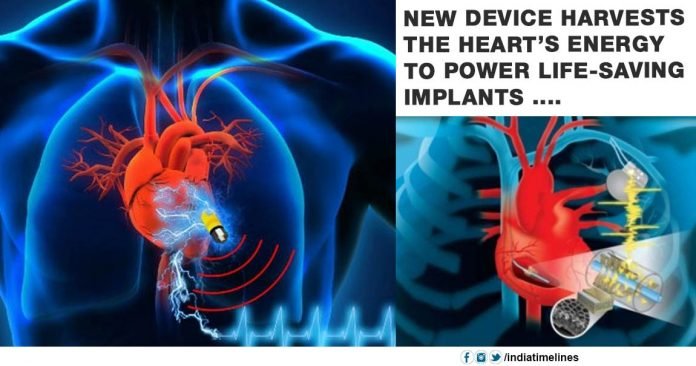
New device harvests the heart’s energy to power life-saving implants:- Millions of people rely on battery-operated pacemakers, defibrillators, and other life-saving implantable devices that need to be changed every five to 10 years. Scientists have developed a dime-sized device to convert the kinetic energy of the heart to electricity for the power of a wide range of life-saving implant devices such as pacemakers. The heart’s speed is so powerful that it can recharge our life-saving devices, researchers from Dartmouth College in the US said.
New device harvests the heart’s energy to power life-saving implants
According to a study published in the Journal of Advanced Materials Technologies, replacement is required for surgery, which can be expensive and can cause complications and the possibility of infection.
“We are trying to solve the final problem for any implantable biomedical device,” Dartmouth Engineering professor John X J Zhang. The study’s principal researcher Zhang completed with the physicians at the University of Texas at San Antonio. “How do you make an effective energy source so that the device will work during the entire lifetime of the patient without the need for surgery to replace the batteries?”
Lin Dong, a research associate of Dartmouth, said, “The importance of this is that the device does not interfere in the body’s work.” “We knew it was to be biocompatible, lightweight, flexible and low profile, so it not only fits into the current pacemaker structure but also scalable for future multi-functionality.”
New device harvests the heart’s energy to power life-saving implants
New device harvests the heart’s energy to power life-saving implants. The team has proposed modifying pacemakers so that the kinetic energy of the heart linked connected wire can be exploited so that it can be converted into electricity to charge the battery continuously. The added material is a Part of thin polymer piezoelectric film called “PVDF” and when delineation with porous structures – either an array of small buckle beams or a flexible cantilever – also small mechanical speed for electricity Can change.
Researchers said that the same module can be potentially used as a sensor so that data collection can be done to monitor patients’ real time.”We have completed the first round of animal studies with great results that will be published soon,” Zhang said. One of the authors of the study, Andrew Closson said, “There is already a lot of interest from leading medical technology companies.”





































Rattling instructive and good structure of content material, now that’s user genial (:.
кухня под заказ – Создайте уникальный дизайн кухни, подходящий именно вам.